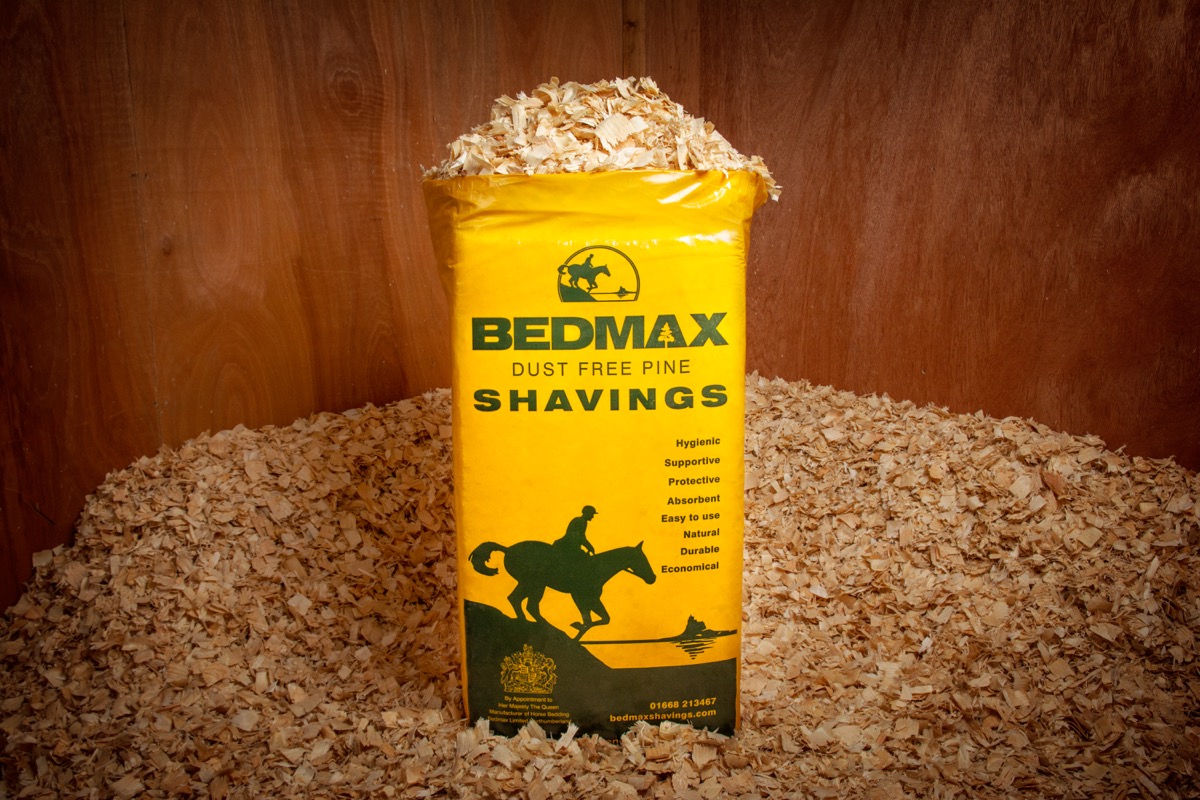In our March 2017 Bedmax Equine Health survey, we found that over 30% of the horses that owners reported had been off work and/or required the vet had been sidelined by respiratory problems and disease. In most of these cases, says a leading UK equine vet, the suffering and cost of respiratory ill health could have been avoided by better preventative healthcare management – including the use of a high quality, low dust bedding.
Lee Paul is a director of B&W Equine Vets, one of the UK’s leading and largest specalist equine practices whose 30 vets serve horse owners throughout the South West of England and South Wales.
Lee is one of the directors in charge of B&W’s equine hospital and is regularly on course at leading events including Badminton, Gatcombe Park and Burghley, where Bedmax is the official choice of bedding for the competitors’ horses. He is also a passionate advocate of preventative equine healthcare.
“The figures in the Bedmax survey tally with our own clinical case load. Respiratory disease is one of the most common problems we deal with. Clearly, for anyone committed to the health and wellbeing of their horses, including vets like me, preventing respiratory problems from developing in the first place is far better for the horses and their owners than having to call in a vet to cure them.”
Better stable management helps prevent respiratory health problems
“We owe it to our horses to prevent them suffering from respiratory disease if we can help avoid it, and in the majority of cases, I am sure we can. There is no doubt in my professional opinion that getting your stable management right is the cornerstone of respiratory health for stabled horses.”
Anyone who has experienced the damage and suffering that respiratory disease can inflict on a horse will understand the importance of the equine healthcare message that Lee is so committed to promoting. For any individual horse, the suffering caused by respiratory disease is acute. If our survey results and Lee’s own practice caseload reflect the national figures – and we are sure they do – then the scale of preventable suffering across the UK is huge.
Counting the cost in equine suffering
There are an estimated one million horses in the UK. If between 13% and 15% of these horses are affected by respiratory disease severe enough to require veterinary treatment, then between 130,000 and 150,000 horses are suffering from clinical respiratory disease each year.
The cost of this in equine suffering can’t be measured in facts and figures, but the financial cost can be estimated with some accuracy, and it’s huge.
Counting the cost in your veterinary bill
“The cases we deal with obviously vary in severity and in the cost of treatment,” says Lee Paul. “But as a practical benchmark an average Upper Respiratory Tract infection would require one or two tracheal washes, and oral or injected administration of a corticosteroid, with or without a bronchodilator.
“The average treatment period for a typical URT problem would be five to six weeks, and the cost of our treatment would be between £1,000 and £1500.”
Dust free bedding is a fundamental part of the treatment
“Managing the stable environment properly is vital to the treatment of respiratory disease and the horse’s recovery,” says Lee, “and to prevent recurrance. Stables must be very well ventilated. Whever possible we would recommend using door bars or chains so that the stable door can be left open. Turnout is ideal, and essential when stables are being mucked out, and we recommend that horses recovering from or vulnerable to respiratory disease are not kept in corner stables.
“Most importantly, the stable must be free of the dust and spores that probably caused the respiratory problem initially, and will certanly prolong or exacerbate it if they are not eliminated. The main sources of dust and spores in the stable are forage and bedding, so that means feeding properly soaked or steamed hay, or haylage, and using a genuinely low dust bedding.”
What the vet sees is the tip of the iceberg
This is the stable management regime that all horse owners should follow at all times to PREVENT their horses from suffering respiratory disease, says Lee Paul, because it is highly likely that respiratory problems are far more widespread than our survey results indicate. The cases of respiratory disease that vets like Lee Paul are called to treat are just the tip of the iceberg.
“Owners call us out when they see recognisable symptoms of respiratory disease, but I have no doubt that the amount of ‘subclinical’ cases that we don’t see is vast.
“Research studies have suggested that very high proportions of horses may well have subclinical respiratory disease that most owners won’t be aware of until the clinical symptoms become obvious.”
And what causes this escalation?
“Dust and spores in the stable are likely to be the principal trigger for an allergic reaction or an infection of the respiratory tract that will spark full-blown, chronic, incurable respiratory disease.”
B&W Equine Vets use Bedmax shavings in their clinics and equine hospital.
Bedmax – shavings made specially to help beat respiratory disease
Bedmax began developing a purpose-made shavings bedding specifically for horses in 1998. Our aim was to create a completely natural, top quality bedding that would help horse owners overcome the many equine health problems associated with keeping horses in the confines of a stable.
Our top priority then was to eliminate the ‘airborne’ dust and spores present in traditional beddings such as straw and by-product wood shavings that cause respiratory problems and disease.
It still is our most important priority to ensure that Bedmax and Littlemax are free of dust and spores, helping owners to create a stable environment that safeguards their horses’ respiratory health and wellbeing, and minimises the risks, costs and suffering of this key equine health threat.




